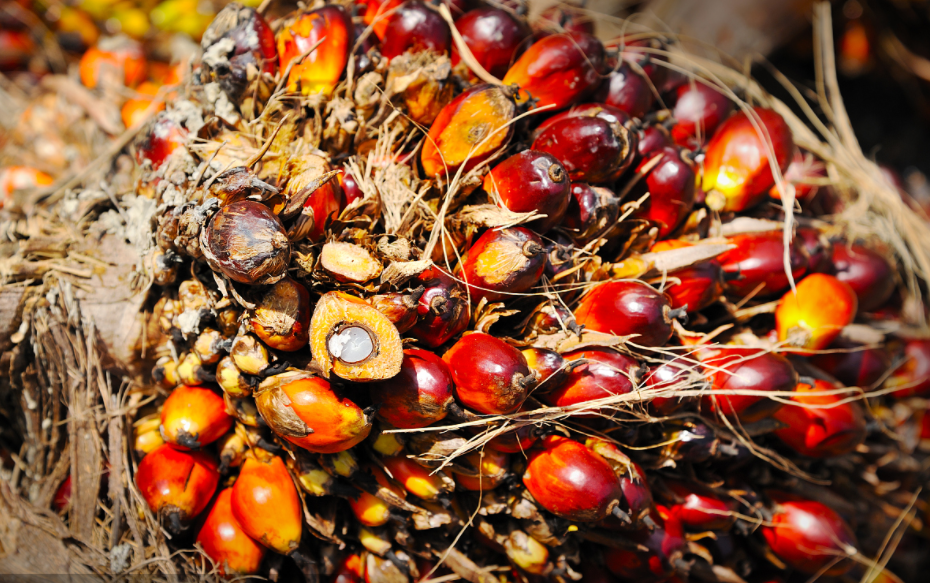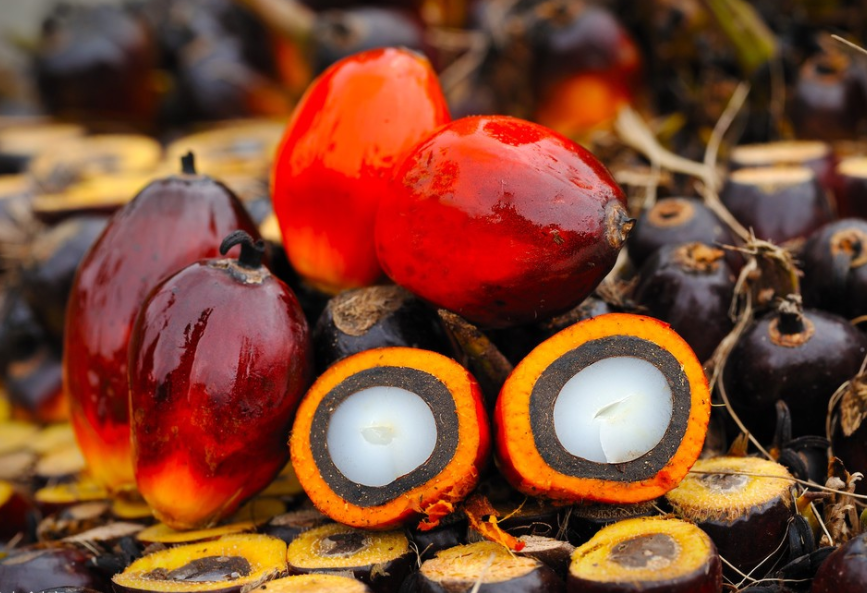1. Overview of Palm Oil
Oil palm is the woody oil plant with the highest yield per unit area in the world. Its main product, palm oil, can reach 200kg per mu, which is 5-6 times that of peanuts and 10 times that of soybeans. Palm oil in the traditional sense refers to the squeezed palm fruit pulp, which is different from the palm kernel oil squeezed from the kernel. Palm oil, soybean oil, and rapeseed oil are collectively called "the world's three major vegetable oils."
In the past five years, palm oil has been the world's largest vegetable oil variety in terms of production, consumption, and import and export volume.
The most suitable area for the growth of oil palm trees is in tropical areas between 5 degrees north and south latitudes of the equator. It is native to the west coast of Africa. In the 1970s, Southeast Asian countries began to plant them in large quantities. So far, Malaysia, Indonesia, and Nigeria are the top three producing countries in the world.
2. Palm oil production
Palm oil is obtained from the pressing process of fresh palm fruit. The palm fruit grows in bunches, and each bunch weighs about 20-30kg and contains 1500-2000 fruits. Farmers pick palm fruit bunches on a periodic basis and must transport them to the factory for processing on the same day. The quality of crude palm oil depends on the integrity of the palm fruit bunch. Once the palm fruit is damaged, it will deteriorate quickly, which will affect the quality of crude palm oil.
The main products of the palm fruit pressing plant are crude palm oil and palm kernels. The processing capacity is about 60-100 tons of palm fruit bunches per hour. For crude palm oil, it usually goes through processes such as sterilization, threshing, cooking, pressing, washing, purification, and drying.
For palm kernels, after being squeezed and separated, kernel/fiber separation, kernel conditioning, kernel crushing, kernel separation, palm kernel drying and other processes are required. The dried palm kernels are sold to palm kernel pressing plants to extract palm kernel oil.
(1) Sterilization
Sterilization as the first step of palm fruit pressing is critical to the quality of the final product palm oil. The main purposes of sterilization are as follows:
① Inactivate the activity of lipase and prevent the rise of free fatty acids.
② Make the palm fruit easier to fall off from the fruit bunch.
③Soften the peel to make oil easier to separate out.
④Nucleolus modulation to reduce nucleolus fragmentation in the subsequent process.
The sterilization process uses a horizontal sterilizer, with about 3 bar steam, and steaming for 60 to 90 minutes. In recent years, with the development of technology, the sterilization process has gradually developed from intermittent to continuous sterilization, which improves operational efficiency and reduces labor and energy consumption.
(2) Threshing
The main function of threshing is to separate the palm fruit from the fruit bunch. The sterilized palm fruit bunch will be conveyed into the drum thresher, and the palm fruit will be separated from the stem as the drum rotates. The stem is a component that does not contain any oil, so the loss of the threshing process mainly comes from the palm fruit that is still attached to the stem after threshing. If the sterilization time is too short or too long, it will affect the loss of threshing. If the time is too short, the palm fruit is difficult to remove; if the time is too long, the stalk will absorb the separated palm oil. Generally speaking, the stalks are burned, and the ash remaining after incineration is used for making potash fertilizer, biofuel or transported back to the plantation as fertilizer.
(3) Cooking and pressing
After threshing, the palm fruit is transported into the cooking pot and heated again with direct or indirect steam. A central shaft with stirring fins is installed in the cooking pot, and the palm fruit is stirred along with it. Under high temperature, the pulp becomes soft and peels off from the core. The mixture is then fed into the pressing equipment. To help the grease flow, hot water is also added. The mixture of crude oil and hot water is collected in a clarification tank for clarification, and palm kernel, fiber and other impurities are discharged from the filter cake and enter the palm kernel oil preparation process.
The
squeezing process needs to extract palm oil from the pulp as much as possible but cannot break the kernels, because the palm kernel oil after the broken kernels will contaminate the crude palm oil and affect the quality. The use of two or multiple squeezing processes can effectively reduce the crushing rate of nuts.
(4) Purification and clarification
The mixture in the clarifier is crude palm oil, water and a small amount of solid particles. The traditional method of clarification is to use gravity separation. The mixture will be heated to 85~90°C and then settled and allowed to stand for 1~3 hours. The oil on the surface will be transported to the centrifuge to further remove the impurities in the oil, and then transported to the vacuum drying. The residue at the bottom of the clarification tank will also enter the centrifuge to recover the crude palm oil inside, and will finally be vacuum dried and cooled to about 45°C for storage.
(5) Wastewater from palm pressing plant
Every ton of palm fruit bunch processed by the factory will produce about 0.65 ton of wastewater. These wastewaters will affect the environment due to their high acid value, high BOD value and high COD value. Generally speaking, the anaerobic or aerobic reaction in the treatment tank can reduce the BOD to below 100mg/L. In areas with stricter environmental protection requirements, more advanced processes will be used to treat these sewage.


